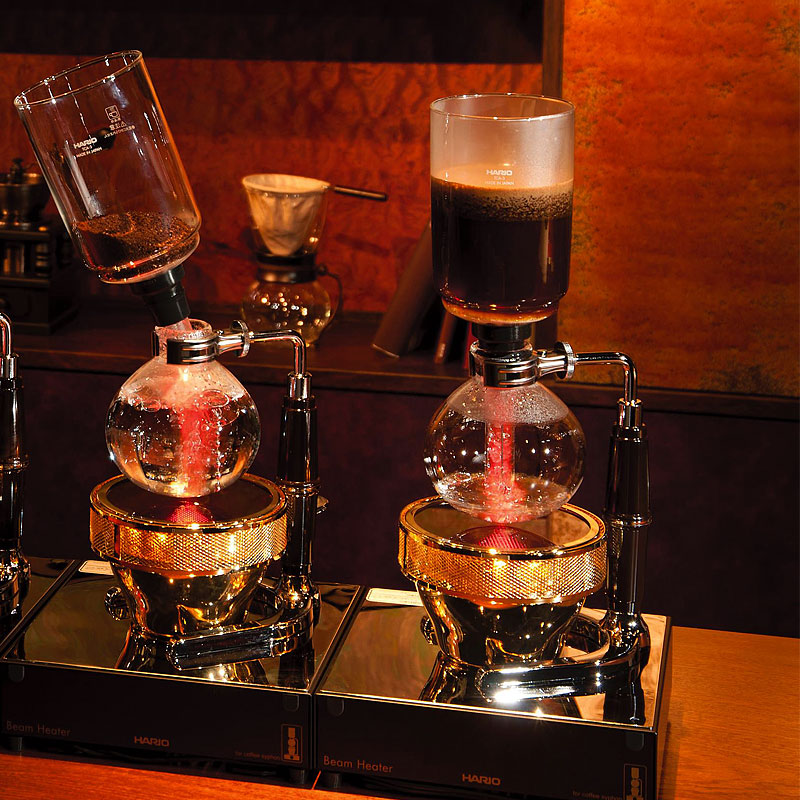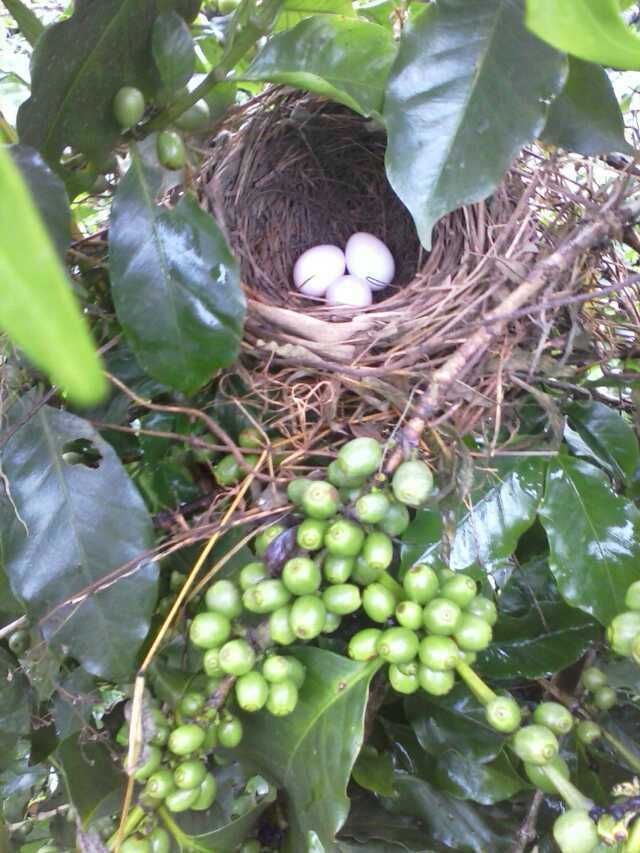Classification and introduction of Refining methods of Coffee Raw beans
When drinking hand cups in a good cafe, the barista is sure to mention these proper terms when introducing beans. Whether washing in water or in the sun, in fact, it is the refined way of coffee beans (processing).
◊ what is the refined way ◊
Let's review first. Coffee beans are actually seeds, while coffee fruits are called coffee cherry fruits (Coffee Cherry). ☞ coffee beans are not beans?! Yes, it is.
There are two coffee beans in each coffee cherry fruit, and only 5% of the coffee cherry fruit has only one coffee bean. In this case, the coffee beans produced are called small round beans.
What are the structures on the outside of coffee beans?
7: outer skin
6: pulp
5: pectin
4: sheep skin / hard shell
3. Silver skin
To get a precious coffee bean, you have to take off the clothes outside.
In a word, this process of removing layers of coats is the so-called way of refinement.
Five refining methods of ◊ ◊
There are about five kinds of refining methods:
Washing with water | half washing with water | Honey treatment
Sumatra wet planing | solarization
* of course, there is also a famous one called intestinal treatment. Such as cat shit, monkey shit, elephant shit and so on, but these droppings are not fine coffee, so I will start another article to explain.
Water washing
1. Removal of debris (optional)
After the coffee fruit is actually harvested, it will first be poured into a large water tank, and immature coffee cherry fruits, branches, leaves and other sundries that will float can be screened and removed first.
two。 Separate the peel and pulp
Then, the coffee cherry fruit that sank below will be moved to another device to remove the skin and flesh.
There is a rotatable roller in the center of the device, and there is a narrow space between the roller and the outer wall, and the coffee cherry fruit will be squeezed as it passes through this narrow space. Only when the coffee cherry is big enough and ripe, and the peel will be soft, will it be crushed and the two seeds inside will be squeezed out.
The pulp of coffee is actually very thin and adheres to the peel. After the cherry fruit is squeezed, ripe seeds of the right size will be separated from the skin and pulp.
3. Ferment
Coffee beans with thick peel and pulp, with pectin, are fermented in a large tank (possibly plastic bucket, cement sink, tile sink, stainless steel tank). There may be water in the trough, or there may be no water. The way of not adding water, which we call dry fermentation, is common in Rwanda.
The fermentation time must be determined according to the local temperature and strain, ranging from 8 to 24 hours. Some will change water and ferment for another 12 hours after fermentation for 12 hours, in order to get a cleaner (crisp) taste.
When the fermentation time is over, the coffee beans pass through a waterway, and the coffee worker will take a rake or a tool like an oar to beat the coffee beans that flow through the channel, which will wash the loosened pectin off the coffee beans completely. For farm owners who attach great importance to coffee quality, they will separate coffee beans from different sections of the waterway, because in the waterway, heavier, denser coffee beans are less likely to move, so they will stay at the near end of the waterway. and the quality of these coffee beans is usually better.
Water-washed and fermented coffee beans usually have a relatively clean and refreshing taste, and the fruit acid will be relatively rich and bright.
Semi-washing
In the same way as washing, semi-washing must first go through the same operation of removing sundries and separating pulp.
The difference is: after the peel and pulp is removed, a special machine (demucilager) will be used to wear off the pectin layer directly using the principle of friction.
Semi-washed coffee beans have a very clean taste, and the fruit is not as sour as washed.
Honey treatment
This is simple, is to remove the peel and pulp, but also with mucous membrane of coffee beans, directly sent to dry.
The leader in honey treatment belongs to Costa Rica. Costa Rica further divides the honey treatment into white honey, yellow honey, red honey and black honey. The difference is in the degree of pectin retention. The order of pectin retention is white honey, yellow honey, red honey and black honey. The degree of retention of pectin can be set by using the equipment of demucilager, which is semi-washed above.
The more it is retained, the higher the sweetness and complexity will be. at the same time, it is also easy to have the flavor of fermented and ripe fruit.
Honey-treated coffee has both sweetness and cleanliness, and basically has the flavor of ripe fruit.
Sumatra wet planing method
The vast majority of coffee trees in Sumatra are grown by small farmers. After harvest, the peel and pulp are removed at home. After removing the skin and flesh, they are placed in plastic buckets or small fermentation tanks for a brief night of fermentation, then pectin is removed and the water content is reduced to about 3040%.
Raw beans with shells in this state will be sold from small farmers to exporters' processing plants, so coffee beans will be transported to the processing plant in a wet state, a process that can take as long as a day. In other words, in this case, the coffee beans will continue to ferment and produce a unique flavor spectrum.
When you get to the dry treatment plant, in order to prevent this fermentation from continuing, you have to remove the water quickly, so you will use a sheller to remove the sheep skin violently, and then let the raw coffee beans remove the moisture quickly in the sun.
Sumatra wet planing method, with deep, woody tone, soil, traditional Chinese medicine, low fruit acid.
Insolation
Sun drying is the simplest and most difficult, and the simple part is that after the coffee cherries are harvested, they are thrown directly into the sun field to dry.
Note that unlike the previous four methods, it is by drying the pulp and peel directly, and then removing the dried peel, pulp and sheep skin directly with special equipment.
The difficulty with tanning is that, unlike other treatments, water and depulper (peeling equipment) can be used to initially screen the maturity of coffee. And as soon as the coffee cherries are dried, no matter the green ones, the red ones and the black ones, they will turn black, that is to say, these good and bad coffee cherries will then be treated together. Unripe cherries will give acrid, astringent, unsweet curry non-raw beans, of course, such coffee must not taste good.
Sun beans are mostly the choice of heavy taste lovers, wine, caramel, chocolate, sweet feeling is very good, fruit acid is mostly on the low side.
All the above refinement methods
Finally, the moisture must be removed to facilitate long-term preservation.
The moisture will eventually remain at about 1011%, because we want to maintain the activity of all the cells in the raw coffee beans and maximize the flavor of the coffee beans. Of course, if you lower the moisture, the less likely it is to ferment, mildew and smell, and the easier it is to preserve it. There is a contradiction between these two considerations, but if we reduce the water content to too low for preservation and let the flavor of coffee beans lose instantly, this is not what our guardians who make fine coffee want to see!
There are two ways of dehydration and air drying. One uses the power of nature (sun-wind), the other is to use hot air and electricity, using hot air and electricity, just like a clothes dryer, there is a drum stirring the raw beans of coffee with a shell, and then the hot air will blow into the roller. this drying method is very fast and can be done in about 8 to 12 hours.
The time of dehydration and air drying must be determined by the total water content of raw coffee beans. What is the total amount of water? That is, which parts are dried together, and the more parts they contain, the higher the total amount of water, and the longer the drying time. If the drying time is prolonged, it is easy to produce the negative flavor of secondary fermentation.
All right, let's sum up the characteristics of various refining methods:
Acidity: washing > semi-washing > honey treatment > wet planing > solarization.
Sweetness: sun > wet planing > honey treatment > semi-washing > washing
Production risk: wet planing / solarization > washing / honey treatment > semi-washing
Equipment cost: washing / semi-washing > honey treatment / wet planing > solarization
Amount of water used: water washing > semi-washing > honey treatment / wet planing method
When farmers choose the way to deal with it, they have a lot of considerations, such as local water resources, funds, risks they can bear, and so on. However, modern thinking and direction pay more attention to what kind of flavor you want to give coffee beans. However, with the progress of the current treatment methods, the boundaries of various refining methods are becoming more and more blurred.
On the whole, however, the five refining methods mentioned above can be regarded as the basis of the foundation. All right, do you remember?
Source: Penguin eating and drinking Guide
Important Notice :
前街咖啡 FrontStreet Coffee has moved to new addredd:
FrontStreet Coffee Address: 315,Donghua East Road,GuangZhou
Tel:020 38364473
- Prev

Coffee brewing mode; points for attention in the operation of the siphon pot to avoid accidents
Using the siphon principle, the boiling water is made into coffee powder and stewed to produce the original flavor of coffee. Suitable for coffee: slightly sour, medium mellow coffee grindability: slightly thicker than powder, close to special fine granulated sugar. What are the secrets and precautions for making coffee in a siphon pot? Note 1 wipe the lower bottle dry, do not have water droplets 2 when pulling out the upper seat, tilt to the right and pull straight up, do not break 3 under the middle filter
- Next

Knowledge of Coffee History and Culture: the Historical Origin of Coffee's aggression against Human beings
Coffee culture legend coffee was first discovered by goats, as a result, people on earth who like to taste fresh can't stop from now on. Human beings are really curious. Hey! Throughout the history of coffee, it is simply a documentary in which mankind has been conquered by it. Watch the origin and development of coffee with [Ice City Coffee]. As people on earth, we really don't have the strength to fight back! Coffee originated in the 6th century AD
Related
- What is the meaning of lactic acid fermentation with coffee bean treatment?
- How to judge the state of foam by sound?
- How does the latte pull out the unicorn pattern? Come to get for a little trick to improve the flower pull!
- Will flower pulling affect the taste of the latte?
- Do you know the history of coffee?
- The difference between honey treatment and sun washing what is raisin honey treatment?
- What kind of milk can a novice use to make coffee foam to keep the foam longer? The correct method and skills of milking tutorial sharing
- Why do washed coffee beans taste sour? Flavor characteristics of washed Coffee
- Introduction to the skill of how to practice the size and height of water injection around the circle of hand-brewed coffee
- How do beginners practice coffee flower drawing from scratch?

